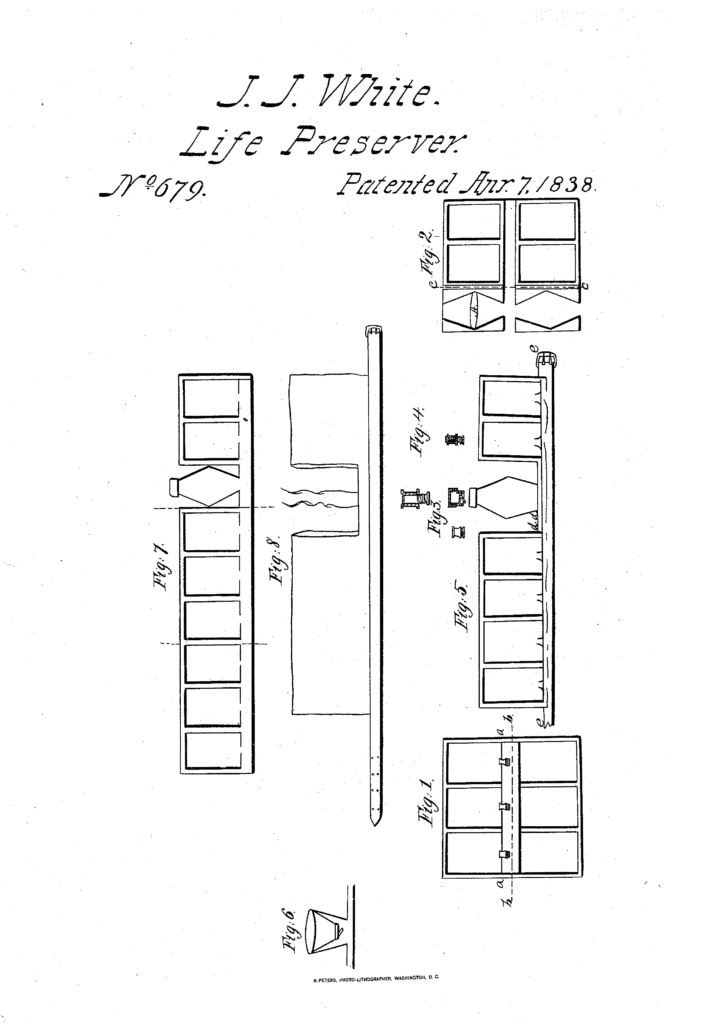On November 16, 1841, U.S. Patent No. 2359 issued to Napoleon Guerin on an Improvement in Buoyant Dresses or Life-Preservers:
The patent explains that the invention consists of a jacket, waistcoat, or Coat composed of any kind of tissue in which is introduced a quantity of from eighteen to twenty quarts of rasped or grated cork. This was not the first U.S. patent on a life preserver, but it was the first patent on a life preserver made of cork, see U.S. Patent No. 679, 1595, and 1596.




















